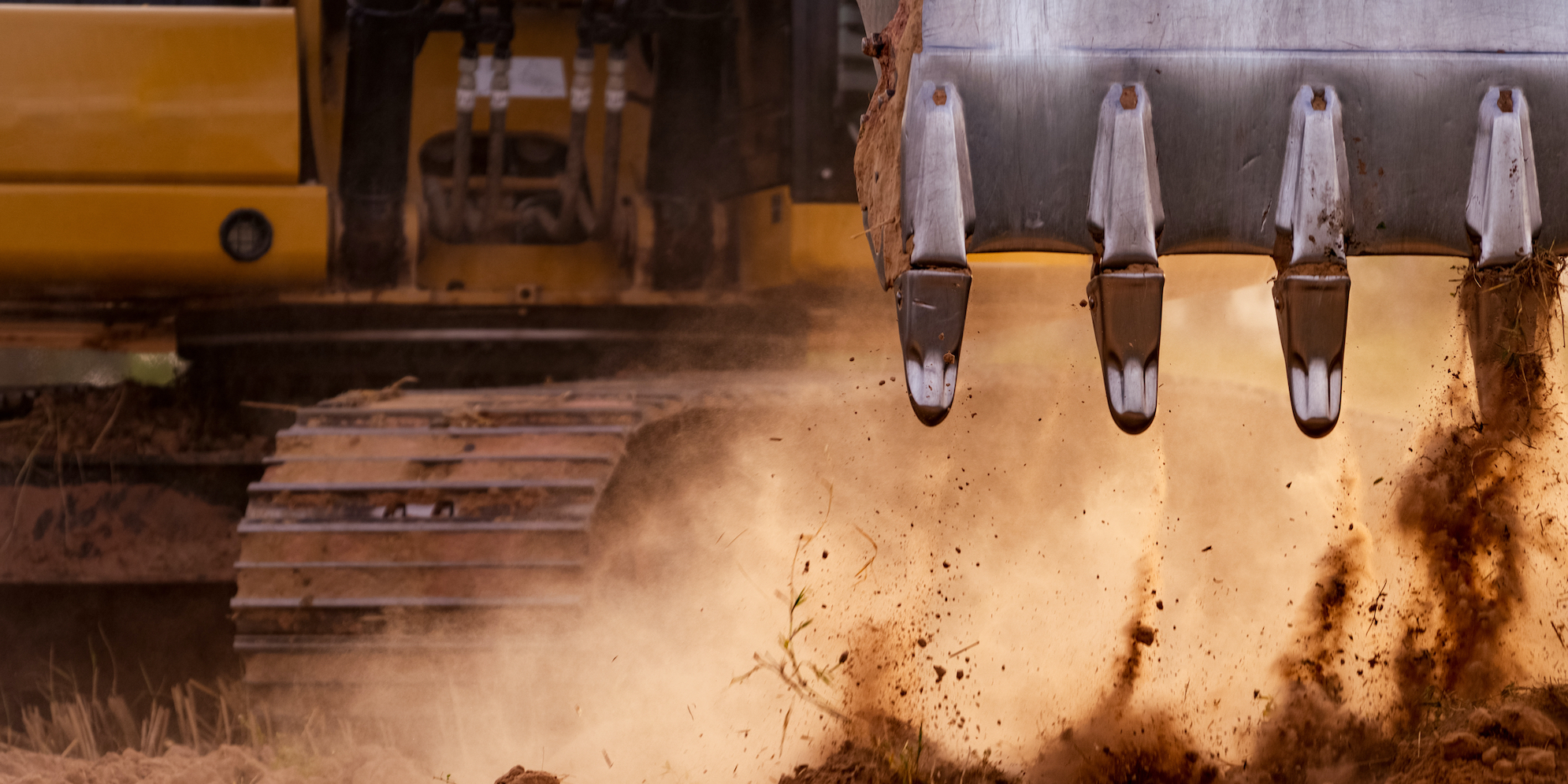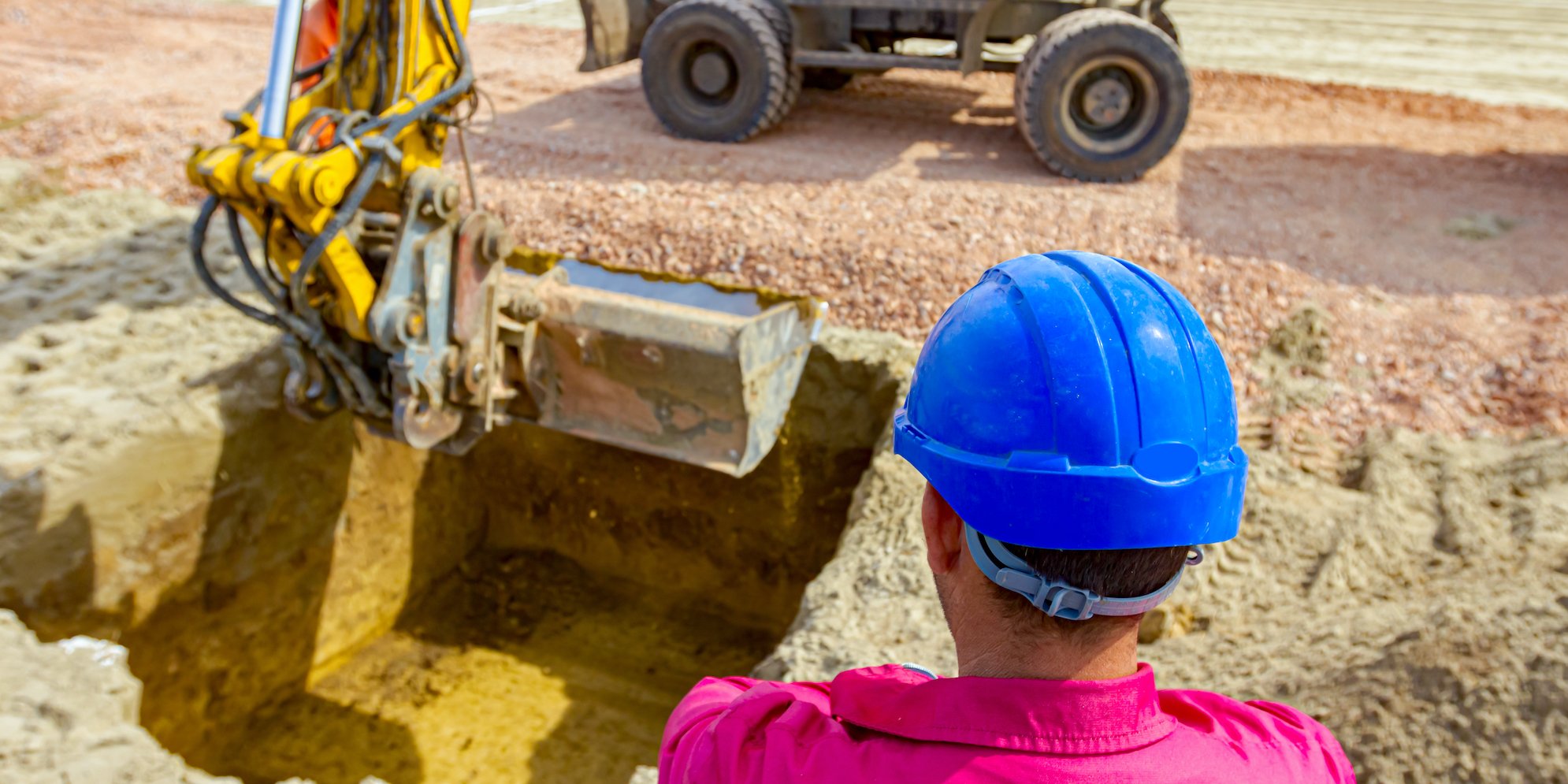Trenching and excavating are required for a wide range of construction projects. But don’t equate their routine nature with safety. Excavation accidents can cause serious injuries and death.
According to the Bureau of Labor Statistics, there were 137 fatalities due to trenching cave-in or excavation accidents in the private construction industry from 2011 to 2018. According to the Occupational Safety and Health Administration (OSHA), the safety hazards workers face during trenching and excavation include:
- Cave-ins: The main hazard associated with trenching and excavation work, cave-ins occur when workers enter an unprotected trench and the walls collapse.
- Struck-by objects: A leading cause of construction-related deaths, struck-by accidents are often caused by moving vehicles, falling loads, and collapsing masonry walls.
- Hazardous atmospheres: Some trenched areas have low levels of oxygen or can be contaminated by toxic gases and chemicals.
- Utility lines: When workers are unaware of utility lines above and below the surface, there’s a risk of hitting them, which can cause electrocution and natural gas leaks.
The best way to protect workers from these excavation safety hazards is to follow OSHA’s safety solutions and tips. Keep reading to learn about these key incident prevention initiatives.
5 ways to protect workers during trenching and excavation work
1. Make sure there are a safe entrance and exit
OSHA requires employers provide ladders, stairways, ramps, or other safe means to emerge from an excavation or trench within 25 lateral feet of workers in all trenches at least four feet deep. To keep workers safe, the means to enter and exit the trench must be within the cave-in protective system.
In some cases, when hazardous conditions arise in a trench or excavation site, survival depends on how quickly workers can get out. Therefore, the importance of taking this step cannot be emphasized enough.
If you plan to use a ramp for workers to enter and exit excavations, OSHA has several requirements in place to ensure worker safety. For example, they must be designed by a competent person, have a non-slip surface, and any cleats or other forms of connecting runway components should be fastened in a manner that will not cause tripping.
Read: How to Prevent Injuries and Fatalities from the Top 4 Construction Hazards
2. Provide cave-in protection
Soil can be unstable, so this makes all excavation sites hazardous. Consequently, workers need protective systems or equipment while inside trenches with a depth of five feet or more. Without this gear, they’re at risk for being crushed by a cave-in.
Proper planning before starting the job is essential to worker safety. This involves a number of steps that need to be completed by an experienced professional.
Soil conditions must be evaluated, so appropriate protective systems can be chosen and built according to standard requirements. Proper planning activities should also be taken. This includes contacting your 811 or One Call center to locate underground utility lines, planning for traffic control, and identifying proximity to any nearby structures that could guide the choice of protective system.
Throughout the construction process, test for hazardous atmospheres; remove or divert water if accumulation occurs; and inspect the excavation site, all adjacent areas, and protective systems at the beginning of each shift, after it rains, and following any other event that could cause a hazard.
Finally, it’s important to only keep excavations open for the minimum time needed to complete the project. This reduces the chances of accidents and injuries.
3. Test for atmospheric hazards
Hazardous atmosphere is one of the main risks associated with trenching and excavation work. Water accumulation can also be an issue. If either of these conditions are present, workers could suffocate, inhale toxic materials, be burned or engulfed by fire, or drown.
You can ensure excavation safety by appointing a qualified professional to inspect all sites and test for hazardous atmospheres before the start of construction, prior to the beginning of every shift, and on an as-needed basis throughout the day.
Check out: 7 Ways to be More Proactive About Worker Safety
4. Don’t place materials around the edge of an excavation
Excavated material, also known as spoils, becomes hazardous if it is positioned too close to the edge of a trench or excavation. This is due to the ability of their weight to cause a cave-in and the potential for spoils and equipment to roll back on top of workers, which can result in serious injuries or death.
There are several actions you can take to provide proper protection from spoils. This includes placing spoils and equipment at least two feet back from a properly protected excavation site, using retaining devices, like a trench box, that span over the top of the trench to keep equipment and spoils from falling back into the site, and hauling spoils to another location if the site doesn’t allow a two-foot setback.
5. Steer clear of trenches that haven’t been properly inspected by a qualified person
Every excavation and trench is different. No matter how experienced you are, you can’t know what hazards are present at a site until a competent professional has completed their inspection.
OSHA warns against entering a trench that hasn’t been properly inspected. To protect your workers from excavation safety hazards, make sure they know to stay out of trenches that have not been inspected, even to complete a quick task.
Following excavation safety best practices can be a matter of life and death. Keep your workers safe by ensuring these solutions and tips are implemented at every construction site.
Want more worker safety tips? Check out “Create a Safety-First Culture to Prevent Worker Safety Incidents.”

